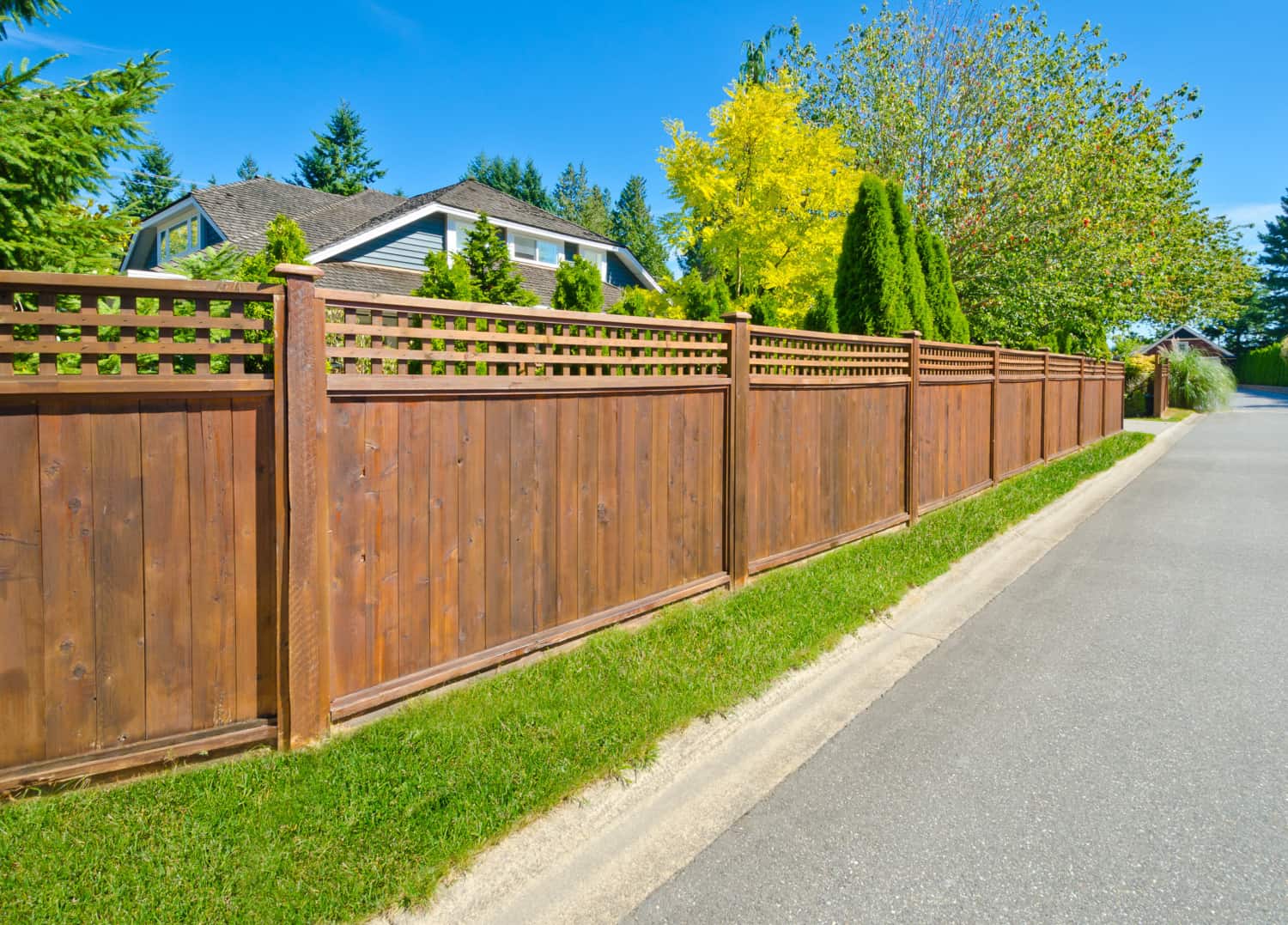All Categories
Featured

When it comes to picking the ideal fence product for your home, aluminum, plastic, and wood are among one of the most popular options. Each product offers unique advantages that suit various demands, preferences, and spending plans. Comprehending the pros and cons of each type can aid you make an educated decision based on your priorities, whether that's visual charm, resilience, or maintenance demands. Below, we damage down the benefits and downsides of these 3 typical fencing materials.
Timber Secure Fencing. Pros:
Aesthetic Charm: Timber fencings offer an all-natural, classic appearance that matches most sorts of landscaping and architecture. They can be quickly tailored with paint or tarnish, providing you the flexibility to develop the ideal color and finish for your property. Adaptability: Wood can be made use of to produce a variety of fencing designs, from conventional picket fencings to a lot more modern-day layouts like privacy fencings or rustic ranch-style fences. If your needs alter, it's easy to include or change to over time. Affordability: Timber is usually much more inexpensive than vinyl or aluminum, making it an appealing selection for home owners on a budget plan. The initial cost of a timber fence is usually less than the other products. Cons:

Upkeep Demands: Wood fencings require regular upkeep, including staining, sealing, or painting to safeguard them from weathering, rot, and pest damages. Without appropriate treatment, timber can weaken swiftly. Resilience: Wood is vulnerable to harm from pests like termites, and it can warp, crack, or split over time because of direct exposure to the elements. In locations with extreme weather condition problems, timber might need to be changed a lot more regularly than other products. Minimal Life expectancy: While timber fencings can last for years with appropriate treatment, they normally have a much shorter lifespan than vinyl or aluminum fences. Plastic Fence. Pros:
Reduced Upkeep: One of the biggest benefits of vinyl fence is its low maintenance requirements. Unlike timber, vinyl does not require to be painted, discolored, or sealed. It's immune to fading, splitting, or warping, making it optimal for homeowners that want an easy fence. Durability: Vinyl fencings are resistant and extremely sturdy to the aspects, including UV rays, rainfall, and humidity. They're also unsusceptible parasites, such as termites, that can harm wood fences. Selection of Styles: Plastic fencings been available in a wide range of colors and designs, and several imitate the look of timber without the upkeep downsides. You can select from personal privacy fencings, picket fences, and even more to fit your requirements. Long Life-span: With appropriate treatment, plastic fencings can last years, much longer than timber fencings, and they feature guarantees that provide comfort. Cons:
Greater Preliminary Expense: While plastic fencings can conserve money on maintenance throughout the years, they tend to have a higher in advance cost than wood fences, which might be a deterrent for some purchasers. Limited Modification: While vinyl fences are readily available in a range of shades and designs, they do not have the modification adaptability that wood gives. You're limited to the pre-designed panels readily available, which could not suit every special visual. Possible for Splitting in Cold Climates: In extreme cold temperature levels, vinyl fences can end up being fragile and might break under impact, making them less suitable for locations with freezing wintertimes. Aluminum Secure fencing. Pros:
Sturdiness and Toughness: Aluminum is a lightweight yet strong material that stands up to corrosion and deterioration, making it ideal for seaside areas or locations with high humidity. Light weight aluminum fences require very little upkeep and can withstand the aspects for several years. Aesthetic Allure: Aluminum fences offer a sleek, contemporary appearance. They are available in a selection of decorative styles and can be used to develop a more contemporary or classy seek your property. Low Maintenance: Light weight aluminum fencings do not require paint or sealing, and they're resistant to corrosion and rust, making them exceptionally low upkeep gradually. Security: Light weight aluminum fencings offer a higher degree of security compared to plastic or wood fencings due to their sturdy building and construction. They can be outfitted with locks and entrances to supply a secure border around your building. Disadvantages:

Price: Aluminum fencings are frequently more expensive than timber or plastic fences, both in terms of materials and installment expenses. This greater cost factor can be a downside for budget-conscious homeowners. Much Less Privacy: Light weight aluminum fencings typically have a more open layout, with pickets spaced apart to allow exposure through the fencing. This might not be the finest choice for your home if personal privacy is a priority. Prone to Denting: While aluminum is rust-resistant, it can still be dented or bent if struck with force, such as by a lorry or hefty devices. While it will not rust, it could not preserve its excellent appearance if it gets damaged. Which Product is Right for You? Choosing the most effective fencing material depends upon your certain demands, spending plan, and long-term prepare for your residential property. Wood may be your ideal selection if you value visual customization and are prepared to keep it on a regular basis. Vinyl might be the suitable remedy if you choose low-maintenance resilience and are ready to spend a bit more upfront. On the various other hand, if you need a resilient, safe fencing with a sleek look, aluminum may be the right product for you.
Ultimately, consider your climate, maintenance preferences, and visual desires when choosing your fencing material. Each alternative has its staminas and weaknesses, yet with the right care and setup, all three can supply eye-catching and reliable boundaries for your residential property.
Latest Posts
Encouraging Young people with WyHy's Financial Tools
Published Apr 19, 25
1 min read
Boost Your Home with Automatic Gates
Published Apr 19, 25
1 min read
About Us: Learn More The Services at Montclare Auto Repair and Our Trusted Solutions
Published Apr 19, 25
2 min read